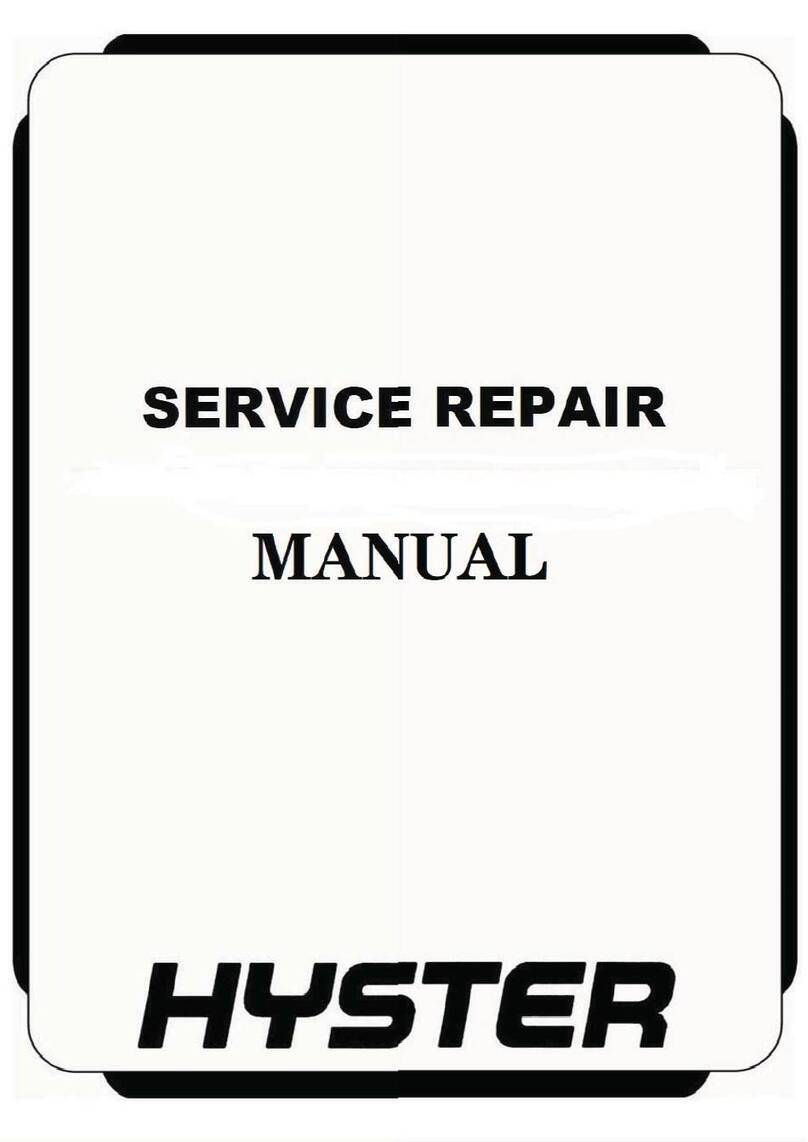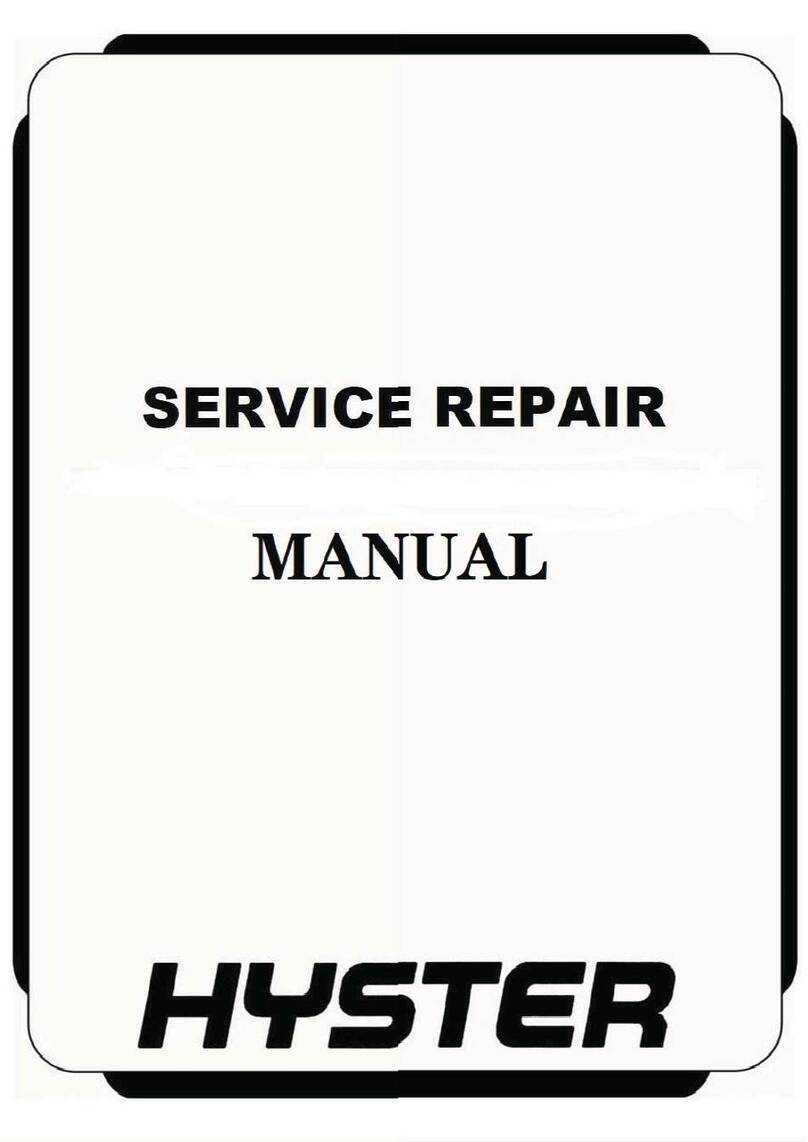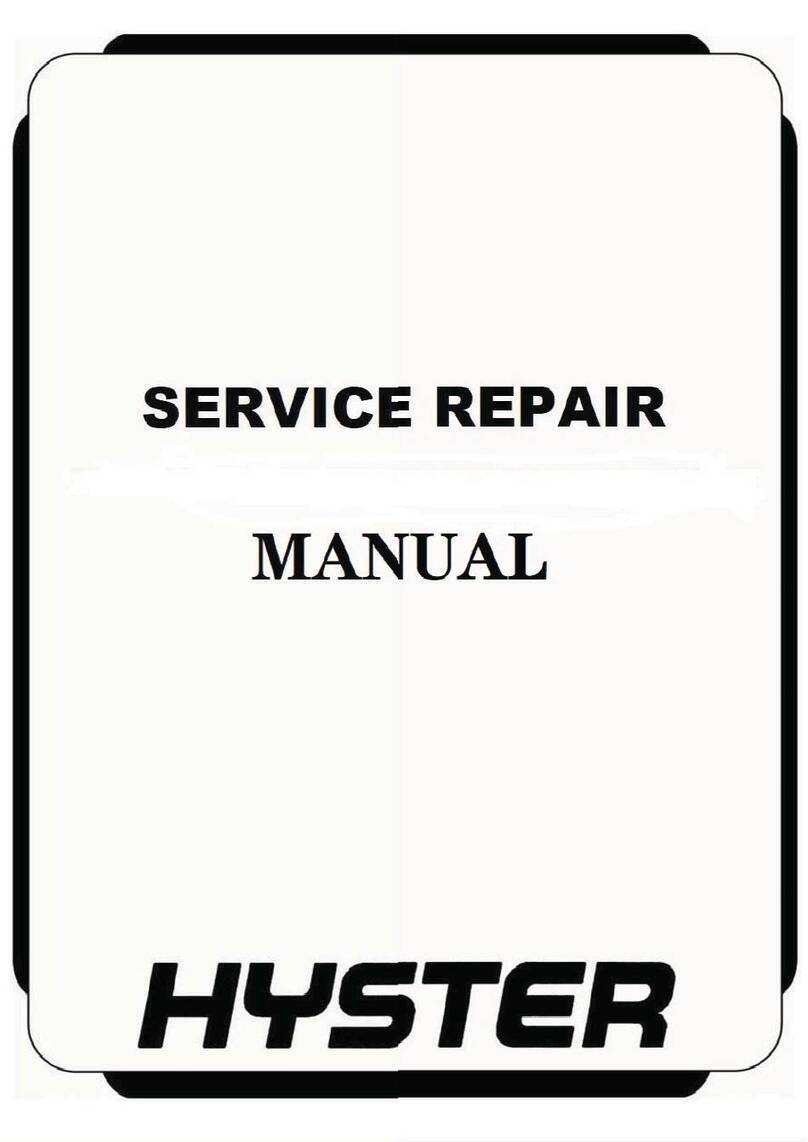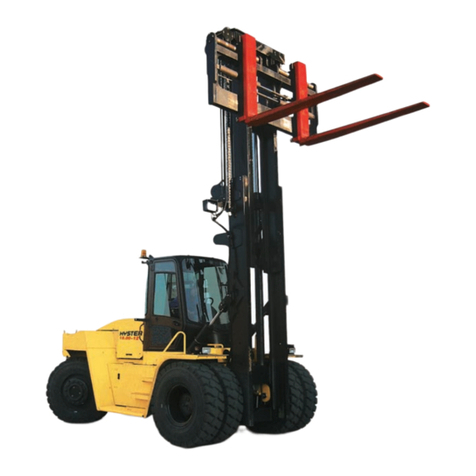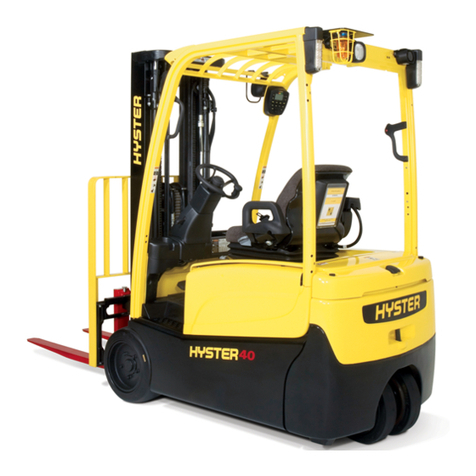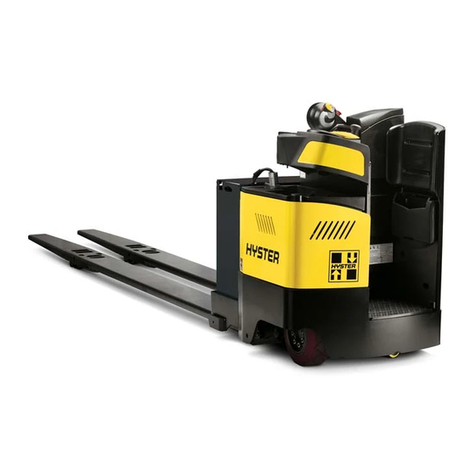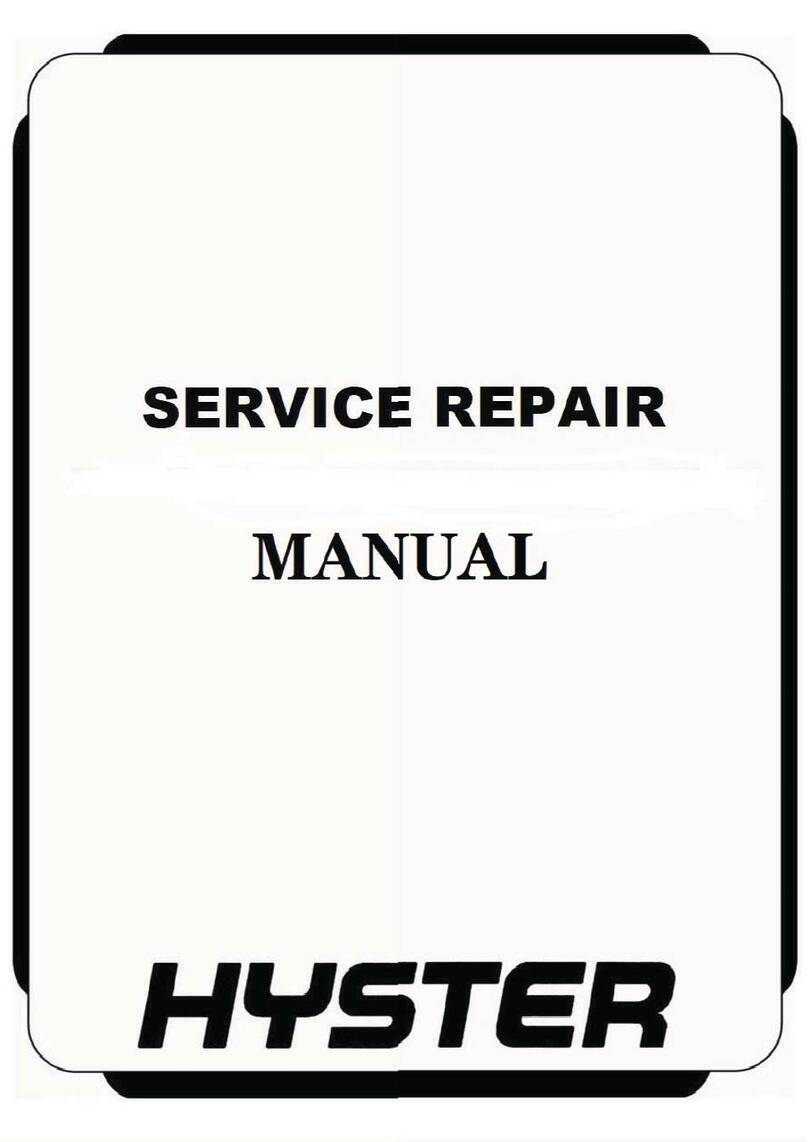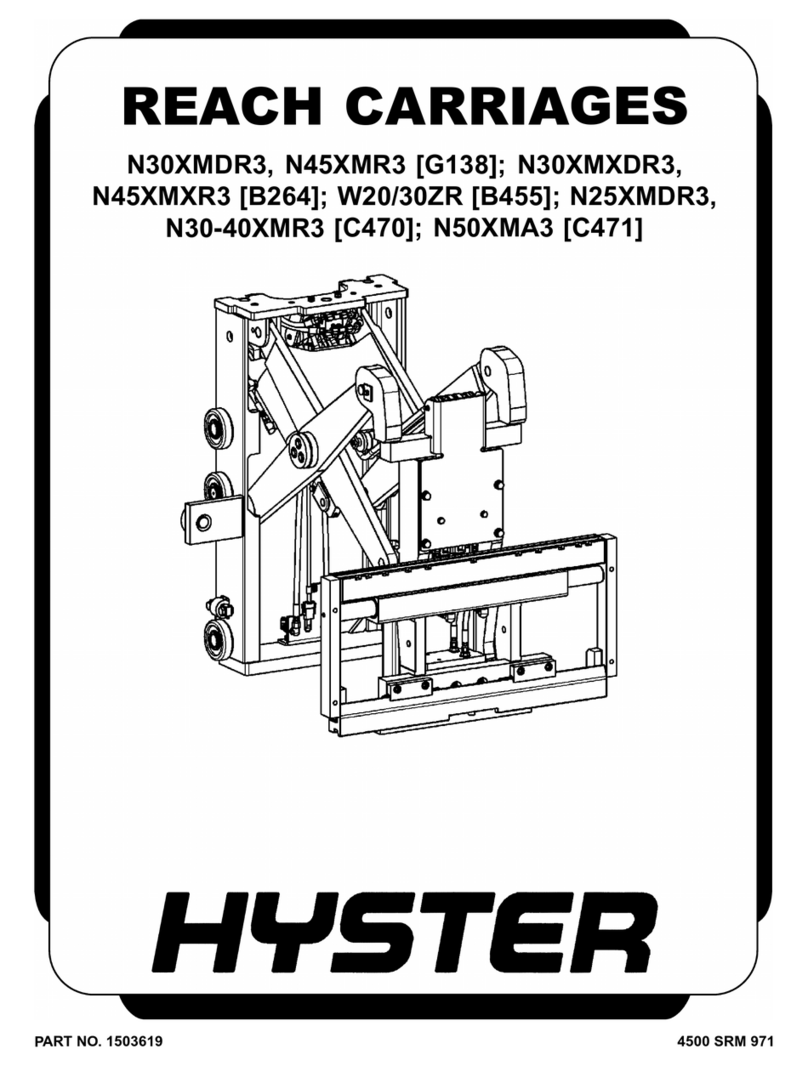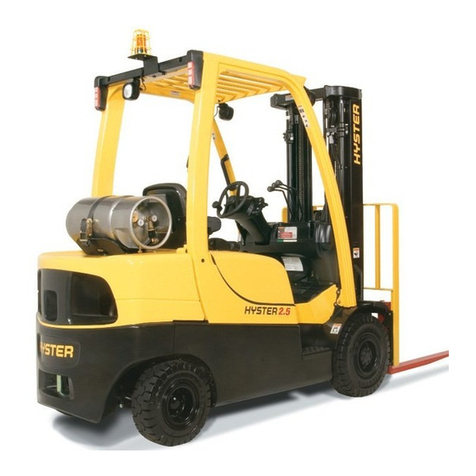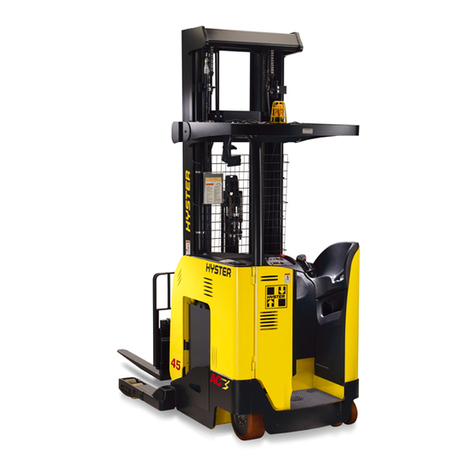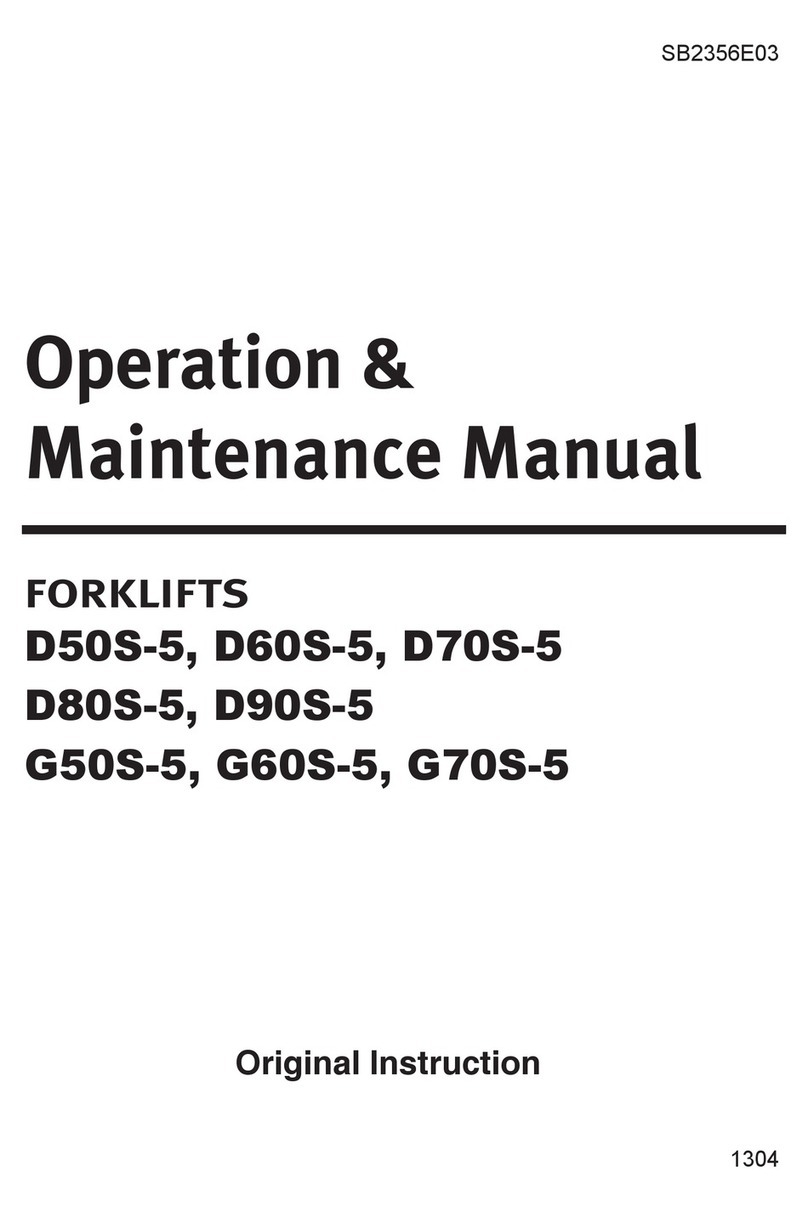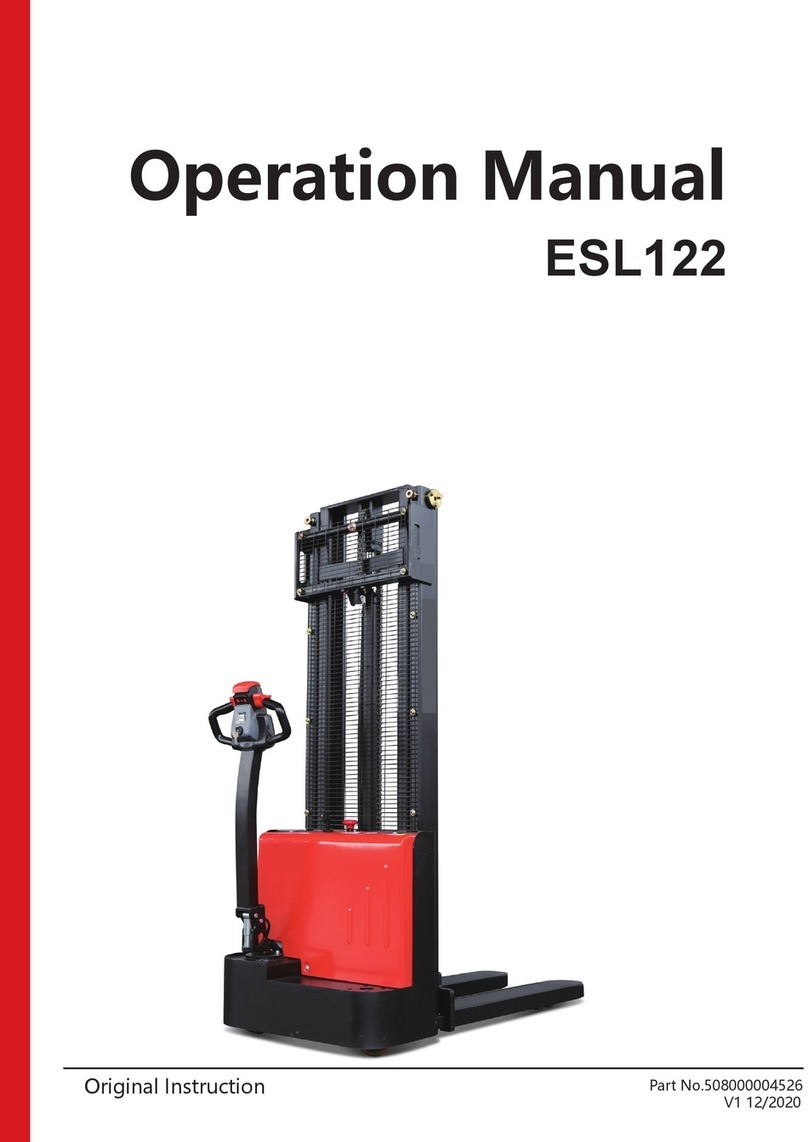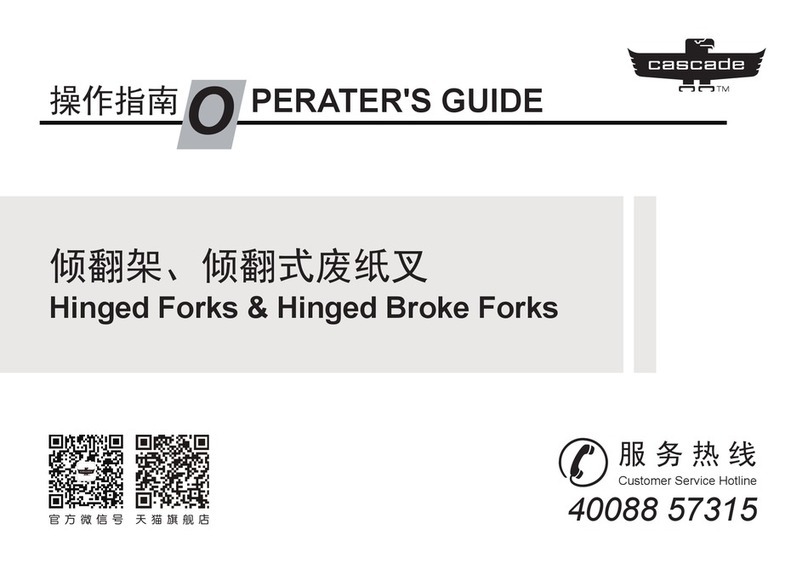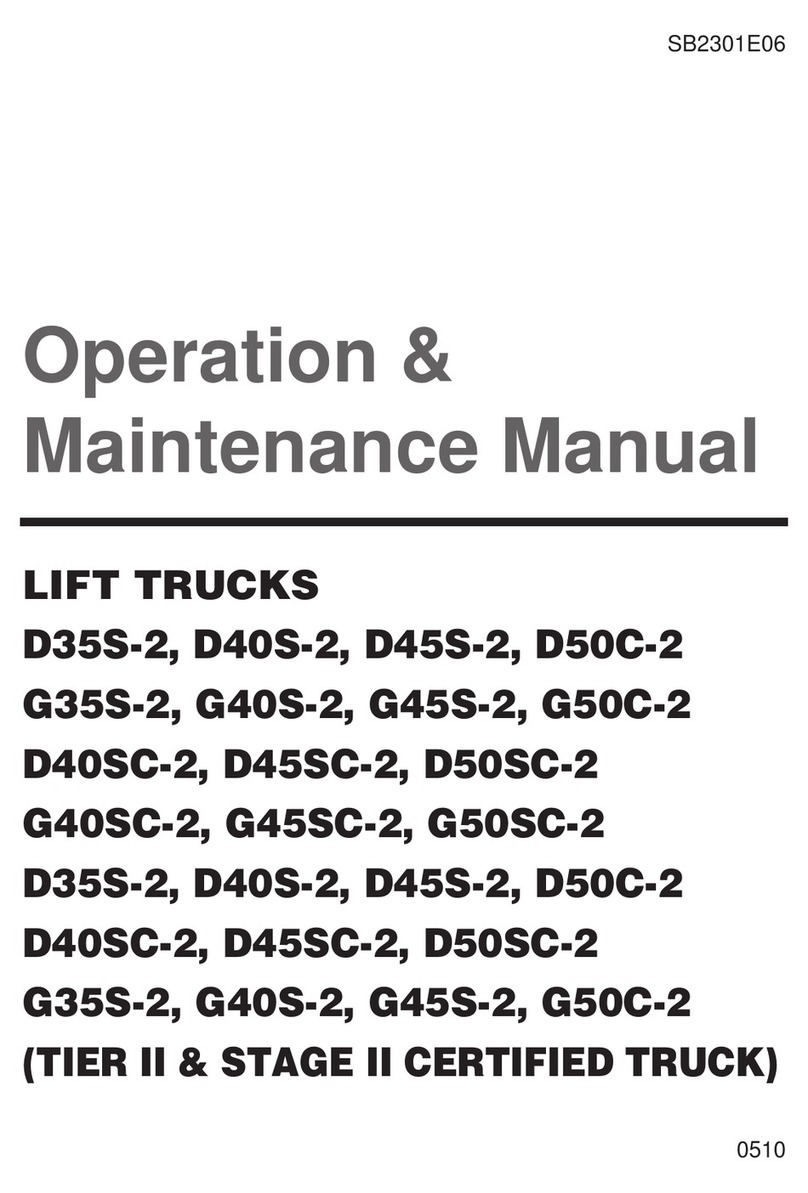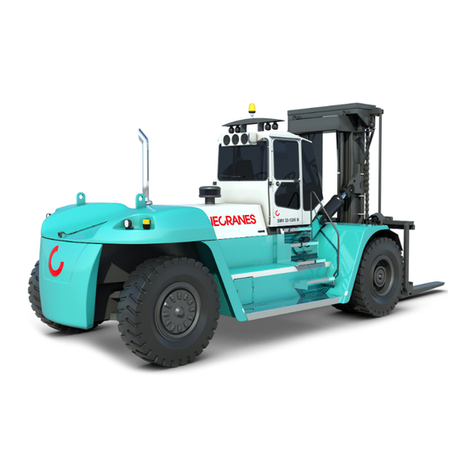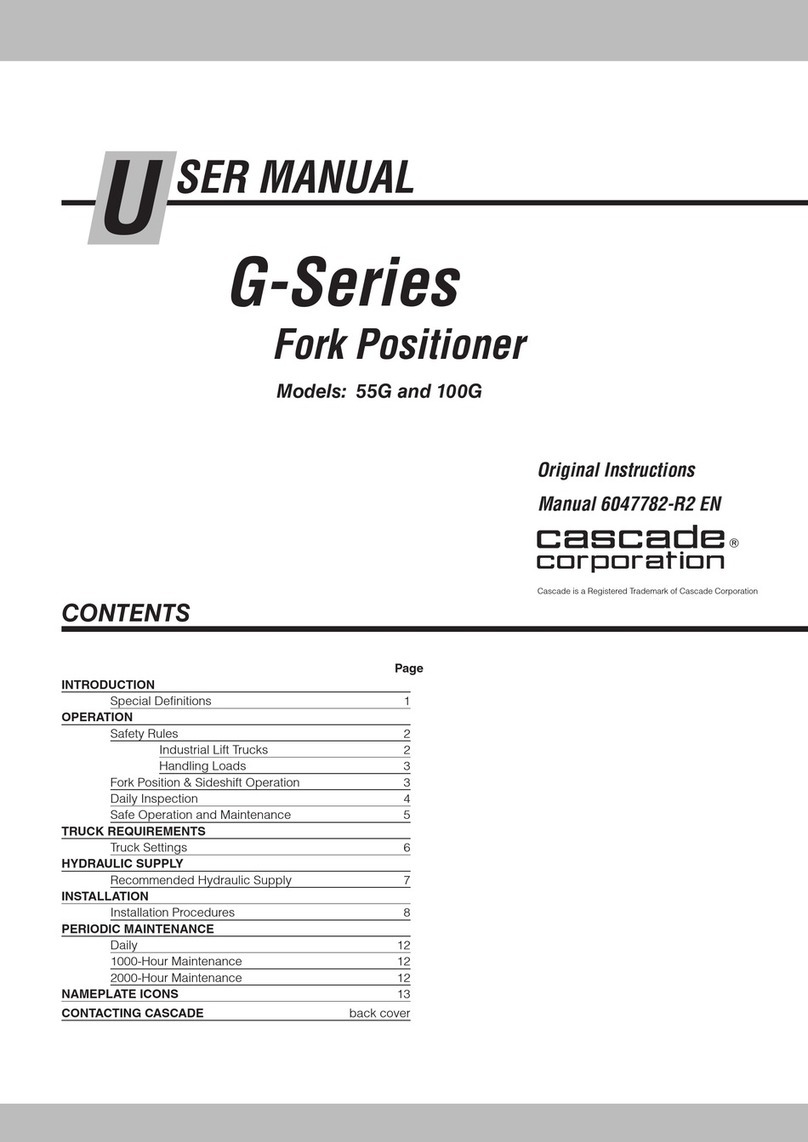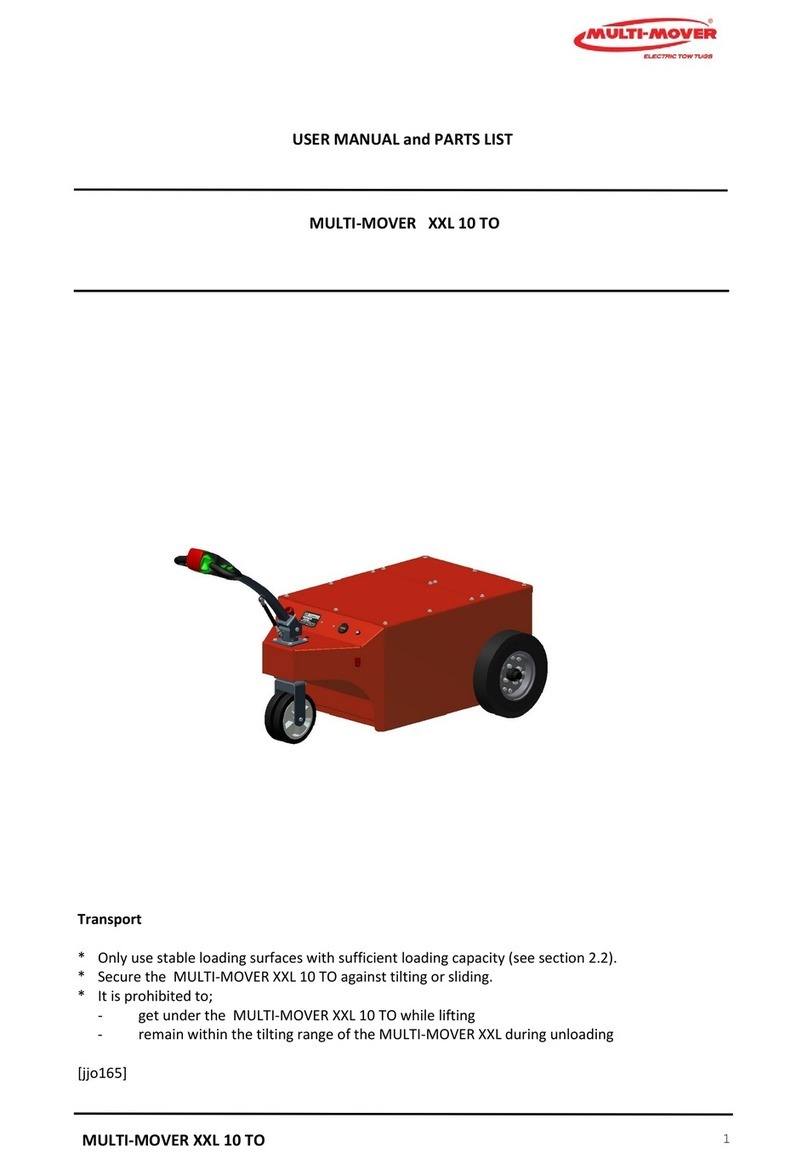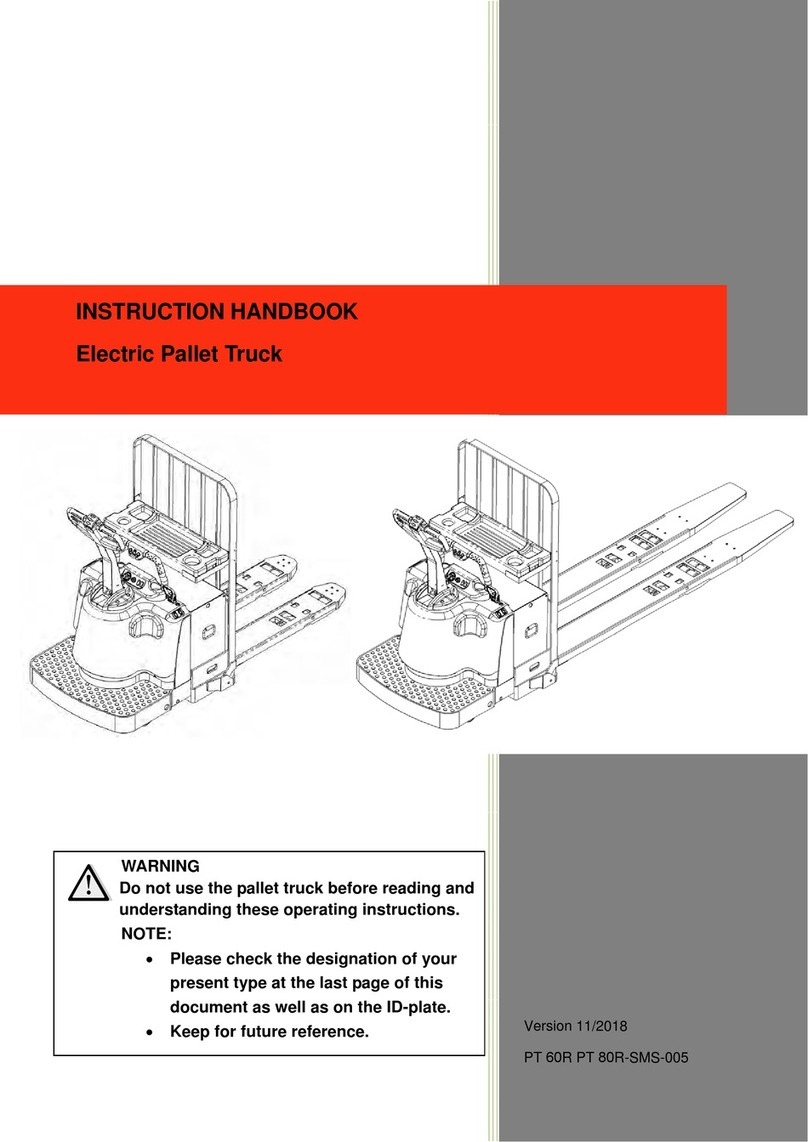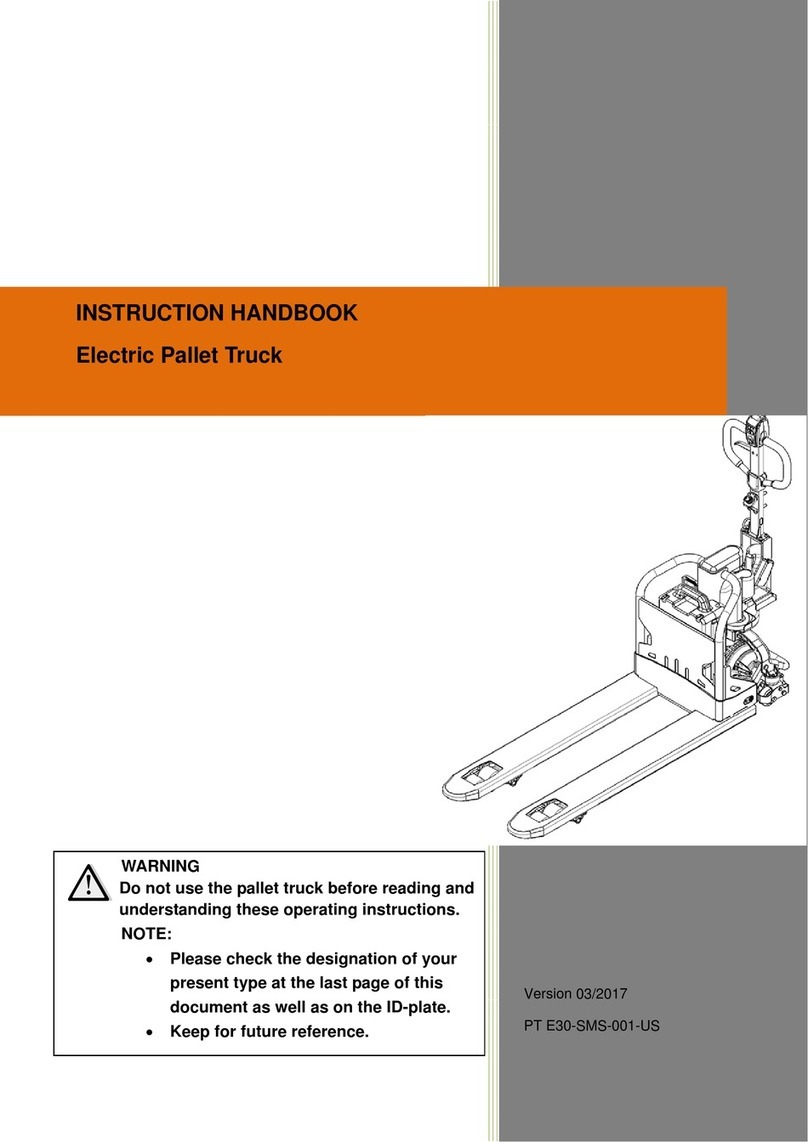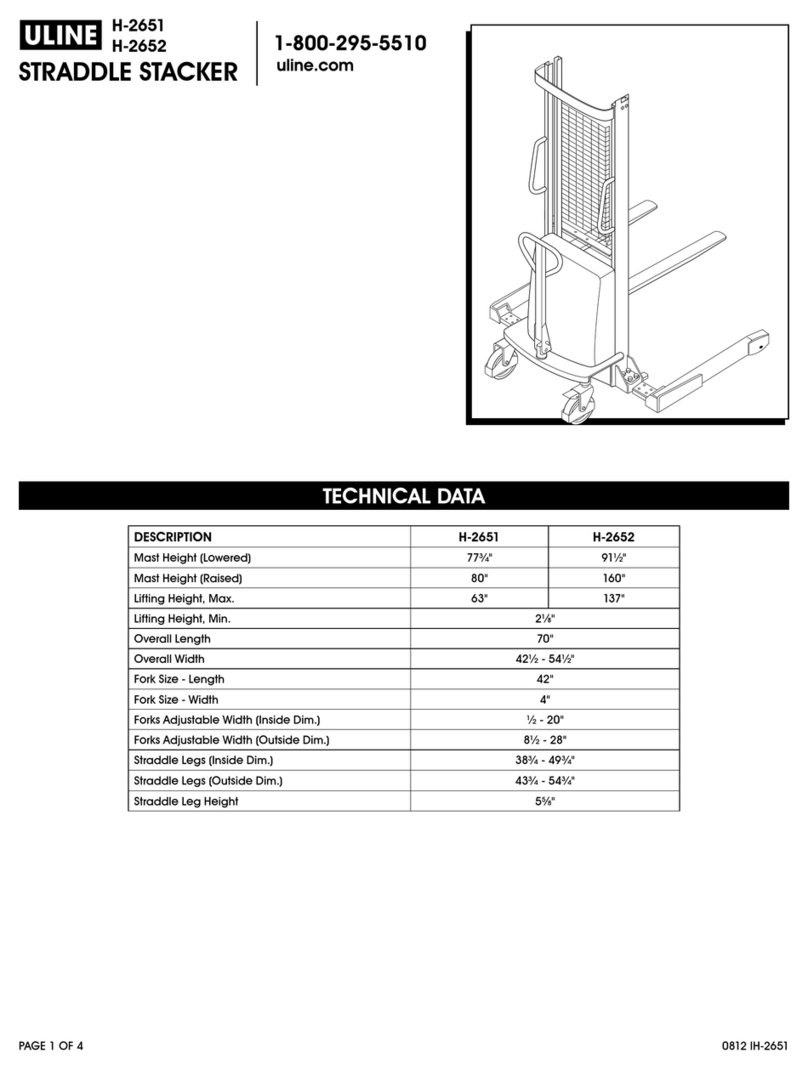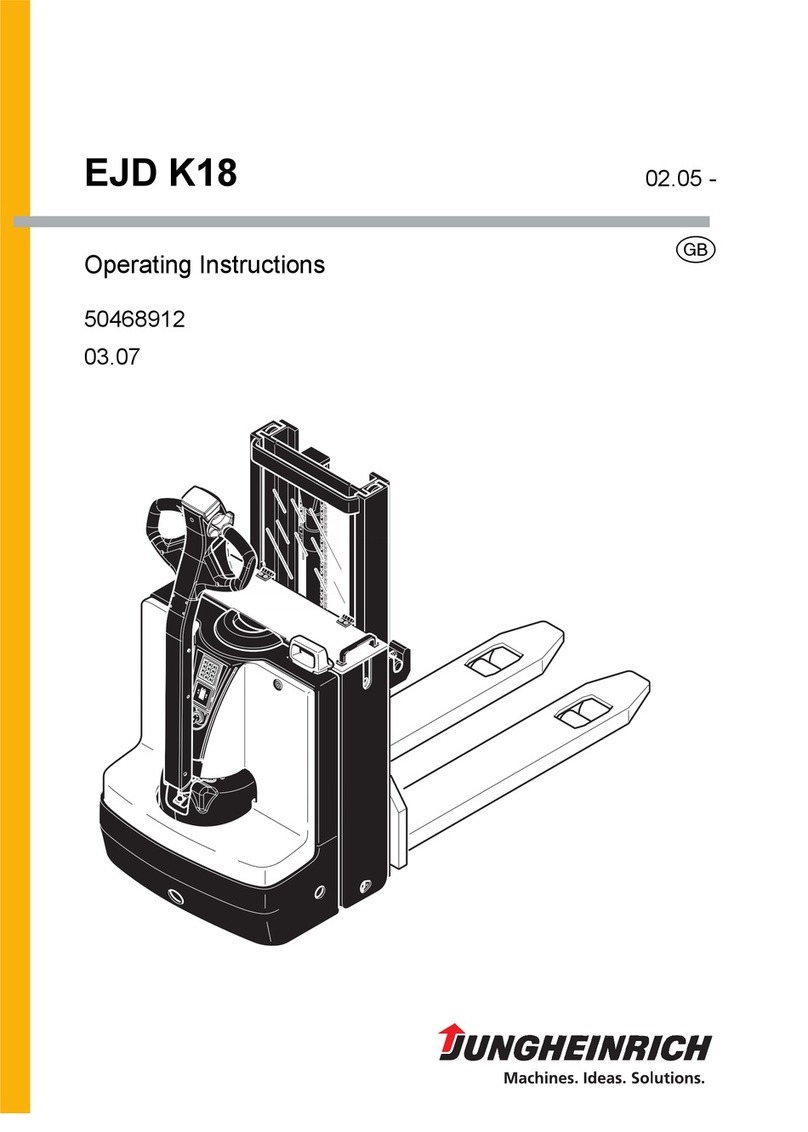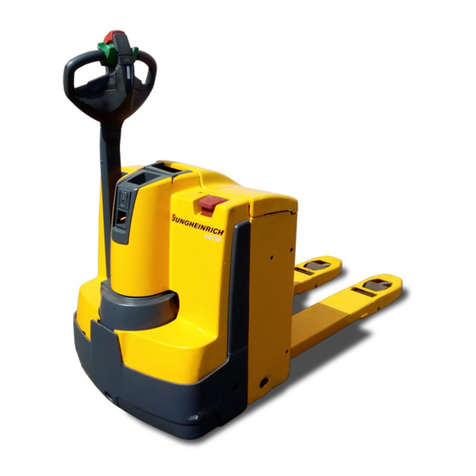
8000 SRM 924 General
General
This section contains a Maintenance Schedule and
the instructions for maintenance and inspection.
The Maintenance Schedule has time intervals for in-
spection, lubrication, and maintenance. The time
intervals are based on a normal operation. A nor-
mal operation is considered to be one 8-hour shift
per day, in a relatively clean environment, on an im-
proved surface. Multiple shifts, dirty operating con-
ditions, etc., will require a reduction in the recom-
mended time periods in the Maintenance Schedule.
Some users have service personnel and facilities to
do the items listed in the Maintenance Schedule.
ServiceManualsareavailablefromyourHyster
lift truck dealer to help users who do their own
maintenance.
Your Hyster lift truck lift truck dealer has the per-
sonnel and equipment to do a complete program of
inspection, lubrication, and maintenance. Periodic
maintenance will help your lift truck operate better
over a longer period.
WARNING
Do not make repairs or adjustments unless
you have both authorization and training.
Repairs and adjustments that are not correct
canbemadeonalifttruckbypeoplewith-
out authorization and training. Repairs and
adjustments that are not correct can make a
dangerous operating condition.
Do not operate a lift truck that needs repairs.
Report the need for repairs immediately. If re-
pair is necessary, put a DO NOT OPERATE tag
in the operator’s area. Remove the key from
the key switch.
Put the lift truck on a level surface. Lower the plat-
form and forks, apply the parking brake, and turn
the key switch to the OFF position. Open the ac-
cess panels and check for leaks and conditions that
are not normal. Clean any oil or other spills. Make
sure that lint, dust, paper, and other materials are
removed from the compartments.
HOW TO MOVE A DISABLED TRUCK
WARNING
To avoid personal inury or property damage,
use extra care when moving a lift truck if there
is a problem with any of the following condi-
tions:
•Brakes do not operate correctly.
•Steering does not operate correctly.
•Tires are damaged.
•Traction conditions are bad.
•The lift truck must be towed on a steep grade.
Poor traction can cause the disabled lift truck
or towing vehicle to slide. Steep grades will
increase the required brake effort.
NOTE: Always remember there may be problems
with more than one of the above areas of the truck.
Do not tow the lift truck if you have not identified
all problem areas.
The best way to move the lift truck is to use another
lifttrucktoraisethedrivetireofftheground.This
willallowthelift truckto betowedorpushed around.
Whatever method is used, the important thing to re-
member is to travel slowly.
If there is no electrical power, there is no steering
and the brake will be applied. If the lift truck is in-
operable, the brake will have to bereleased using two
1/4-20 × 1-1/2 inch bolts. Poor traction can cause the
disabled lift truck or towing vehicle to slide. Steep
grades will require additional brake force to stop the
lift truck.
Never carry a disabled lift truck unless the lift truck
MUST be moved and cannot be towed. The lift truck
used to lift the disabled lift truck MUST have a rated
capacity equal to or greater than the weight of the
disabled lift truck. The capacity must be for a load
center equal to half the width of the disabled lift
truck. See the nameplate on the disabled lift truck
for the approximate total weight. The forks must ex-
tend the full width of the disabled lift truck. Center
theweightofthedisabledlifttruckontheforksand
be careful not to damage the underside of the dis-
abled lift truck. Tilt the mast back and travel slowly.
1
